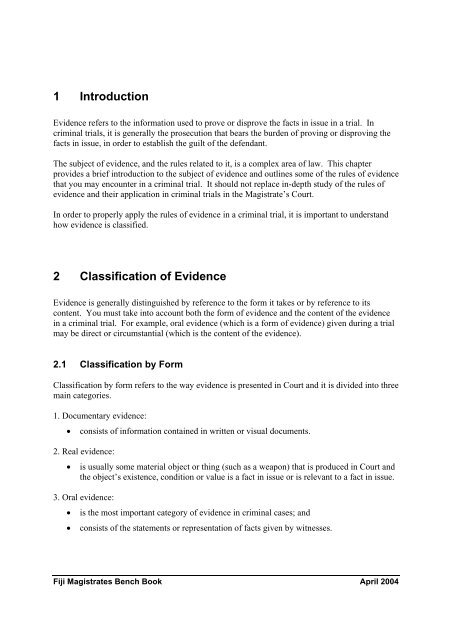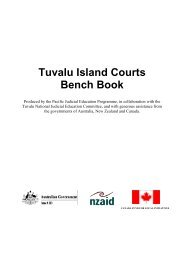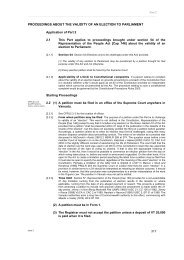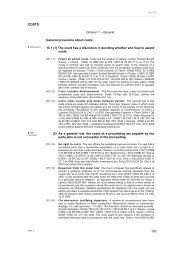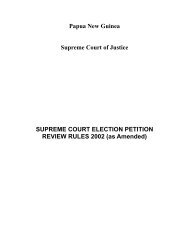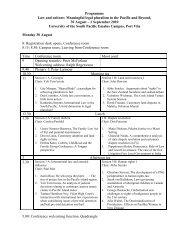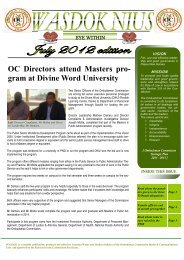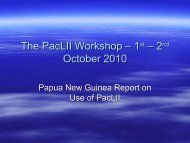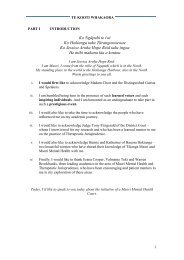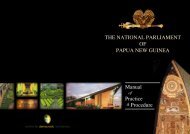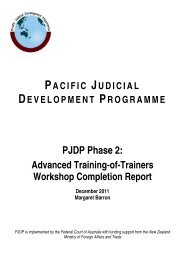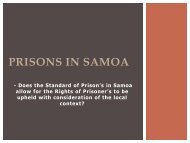Fiji Magistrates Bench Book - Federal Court of Australia
Fiji Magistrates Bench Book - Federal Court of Australia
Fiji Magistrates Bench Book - Federal Court of Australia
Create successful ePaper yourself
Turn your PDF publications into a flip-book with our unique Google optimized e-Paper software.
1 Introduction<br />
Evidence refers to the information used to prove or disprove the facts in issue in a trial. In<br />
criminal trials, it is generally the prosecution that bears the burden <strong>of</strong> proving or disproving the<br />
facts in issue, in order to establish the guilt <strong>of</strong> the defendant.<br />
The subject <strong>of</strong> evidence, and the rules related to it, is a complex area <strong>of</strong> law. This chapter<br />
provides a brief introduction to the subject <strong>of</strong> evidence and outlines some <strong>of</strong> the rules <strong>of</strong> evidence<br />
that you may encounter in a criminal trial. It should not replace in-depth study <strong>of</strong> the rules <strong>of</strong><br />
evidence and their application in criminal trials in the Magistrate’s <strong>Court</strong>.<br />
In order to properly apply the rules <strong>of</strong> evidence in a criminal trial, it is important to understand<br />
how evidence is classified.<br />
2 Classification <strong>of</strong> Evidence<br />
Evidence is generally distinguished by reference to the form it takes or by reference to its<br />
content. You must take into account both the form <strong>of</strong> evidence and the content <strong>of</strong> the evidence<br />
in a criminal trial. For example, oral evidence (which is a form <strong>of</strong> evidence) given during a trial<br />
may be direct or circumstantial (which is the content <strong>of</strong> the evidence).<br />
2.1 Classification by Form<br />
Classification by form refers to the way evidence is presented in <strong>Court</strong> and it is divided into three<br />
main categories.<br />
1. Documentary evidence:<br />
• consists <strong>of</strong> information contained in written or visual documents.<br />
2. Real evidence:<br />
• is usually some material object or thing (such as a weapon) that is produced in <strong>Court</strong> and<br />
the object’s existence, condition or value is a fact in issue or is relevant to a fact in issue.<br />
3. Oral evidence:<br />
• is the most important category <strong>of</strong> evidence in criminal cases; and<br />
• consists <strong>of</strong> the statements or representation <strong>of</strong> facts given by witnesses.<br />
<strong>Fiji</strong> <strong>Magistrates</strong> <strong>Bench</strong> <strong>Book</strong> April 2004


